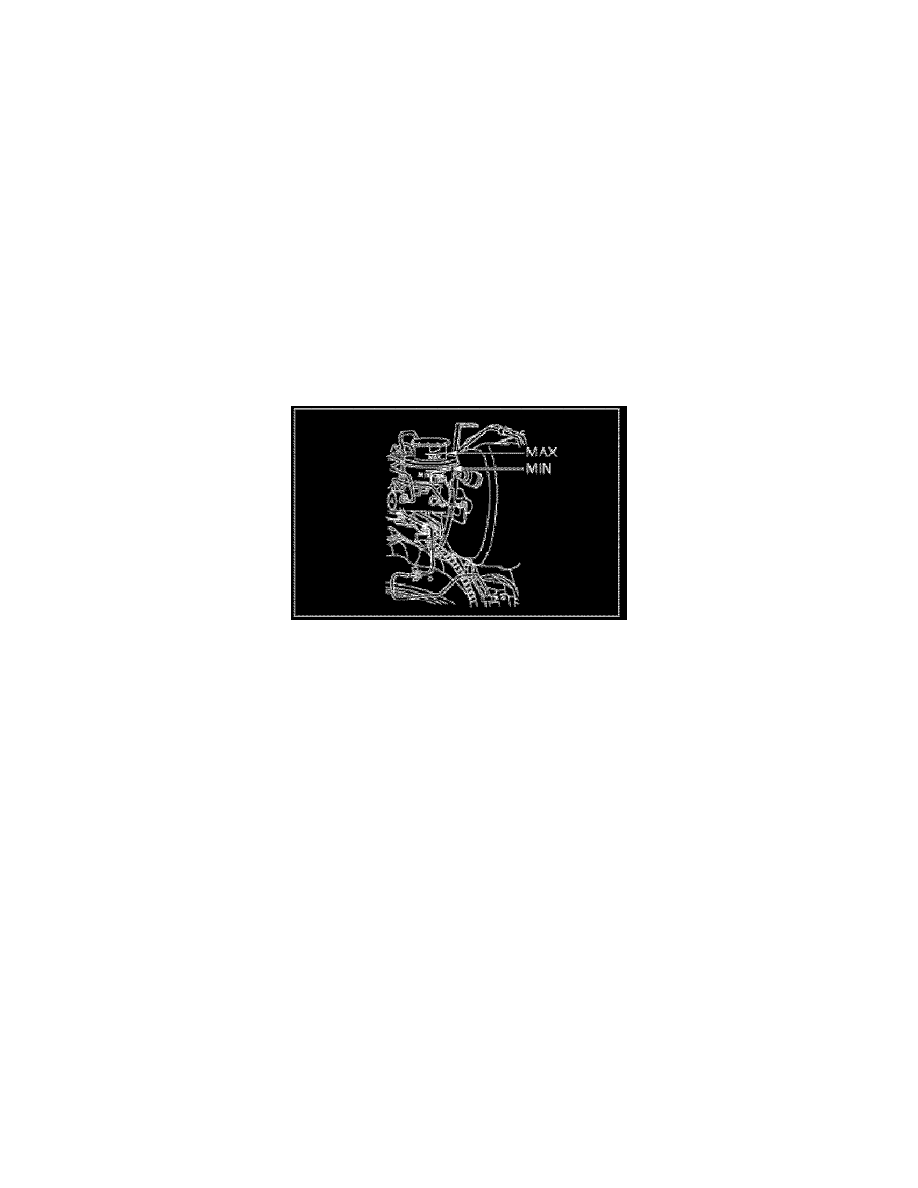Colorado 4WD L5-3.7L (2007)

Check brake fluid leakage of brake hydraulic circuit.
Put a pink dot mark on the brake master cylinder.
Close engine hood.
Record a result of the brake master cylinder replacement on its vehicle.
*BLEEDING OF THE BRAKE HYDRAULIC CIRCUIT
If air enters the bake lines, it will cause poor brake action.
Therefore bleeding should be performed if the brakes have been used with the level of brake fluid in the reservoir excessively low or if brake pipes have
been disconnected in the course of brake servicing.
Bleeding operation calls for co-operative action of 2 persons.
Set the parking brake firmly while bleeding.
Perform bleeding operation with ENGINE RUNNING to prevent damage to push rod seal. Make sure exhaust is suitably ventilated.
*Bleed the hydraulic system with the fluid reservoir filled to the specified level.
Bleed the system starting with the rear wheel cylinder farthest from the master cylinder.
A bleeding operation is necessary to remove air from the hydraulic brake system whenever air is introduced into the hydraulic system. It may be
necessary to bleed the hydraulic system at all four brakes if air has been introduced through a low fluid level or by disconnecting brake pipes at the
master cylinder. If a brake pipe is disconnected at one wheel only that wheel cylinder/caliper needs to be bled. If the pipes are disconnected at any fitting
located between the master cylinder and brakes then the brake system served by the disconnected pipe must be bled.
The vacuum booster will be damaged if the bleeding operation is performed with the engine off.
Set the parking brake completely then start the engine.
Remove the master cylinder reservoir cap.
Fill the master cylinder reservoir with brake fluid. Keep the reservoir at least half full during the air bleeding operation.
Always use new brake fluid for replenishment.
In replenishing brake fluid take care that air bubbles do not enter the brake fluid.
When the master cylinder is replaced or overhauled first bleed the air from the master cylinder then from each wheel cylinder and caliper following the
procedures described below.
